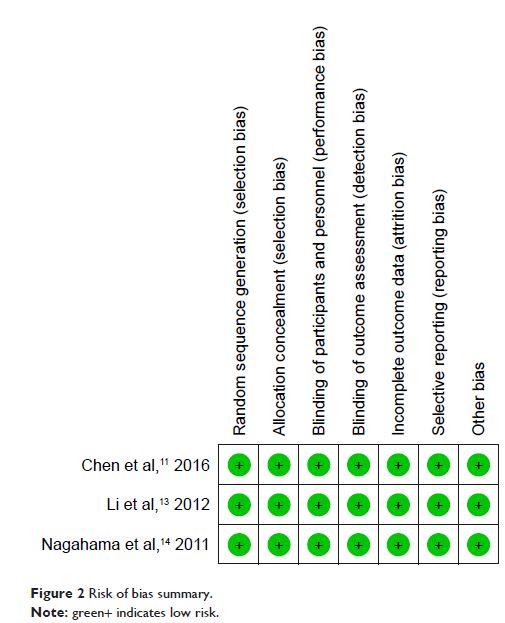9 0 5 7 8
论文已发表
注册即可获取德孚的最新动态
IF 收录期刊
- 2.6 Breast Cancer (Dove Med Press)
- 3.9 Clin Epidemiol
- 3.3 Cancer Manag Res
- 3.9 Infect Drug Resist
- 3.6 Clin Interv Aging
- 4.8 Drug Des Dev Ther
- 2.8 Int J Chronic Obstr
- 8.0 Int J Nanomed
- 2.3 Int J Women's Health
- 3.2 Neuropsych Dis Treat
- 4.0 OncoTargets Ther
- 2.2 Patient Prefer Adher
- 2.8 Ther Clin Risk Manag
- 2.7 J Pain Res
- 3.3 Diabet Metab Synd Ob
- 4.3 Psychol Res Behav Ma
- 3.4 Nat Sci Sleep
- 1.9 Pharmgenomics Pers Med
- 3.5 Risk Manag Healthc Policy
- 4.5 J Inflamm Res
- 2.3 Int J Gen Med
- 4.1 J Hepatocell Carcinoma
- 3.2 J Asthma Allergy
- 2.3 Clin Cosmet Investig Dermatol
- 3.3 J Multidiscip Healthc

双膦酸盐对腰椎融合术后骨质疏松症患者的影响:一项综合分析
Authors Liu WB, Zhao WT, Shen P, Zhang FJ
Received 4 February 2018
Accepted for publication 8 May 2018
Published 17 July 2018 Volume 2018:12 Pages 2233—2240
DOI https://doi.org/10.2147/DDDT.S164548
Checked for plagiarism Yes
Review by Single-blind
Peer reviewers approved by Dr Colin Mak
Peer reviewer comments 3
Editor who approved publication: Dr Georgios Panos
Purpose: We conducted a meta-analysis of controlled clinical trials to
evaluate the efficacy of bisphosphonates in lumbar fusion.
Introduction: Bisphosphonates reduce bone resorption and remodeling by
osteoclast activity inhibition, inactivation, and apoptosis. However, it
remains controversial whether bisphosphonate therapy affects spinal fusion.
Methods: We searched MEDLINE, Cochrane CENTRAL, ScienceDirect, EMBASE, and
Google Scholar to identify studies reporting the effects of bisphosphonates on
osteoporotic patients after lumbar fusion. Secondary sources were identified
from the references of the included literature. Pooled data were analyzed using
RevMan 5.1.
Results: Seven studies met the inclusion criteria. There were significant
differences in solid intervertebral fusion (RD=0.07, 95% CI: −0.00 to
0.15, P=0.05), subsequent VCFs
(RD=−0.21, 95% CI: −0.30 to −0.12, P<0.00001),
pedicle screw loosening (RD=−0.17, 95% CI: −0.28 to −0.05, P=0.006), and cage subsidence
(RD=−0.25, 95% CI: −0.42 to −0.07, P=0.005)
between two groups. No significant differences between two groups were found
regarding implant fixation failure (RD=−0.06, 95% CI: −0.22 to 0.10, P=0.48).
Conclusion: This meta-analysis showed that bisphosphonates may increase solid
intervertebral fusion and decrease subsequent VCFs, pedicle screw loosening,
and cage subsidence.
Keywords: bisphosphonates, lumbar, fusion, meta-analysis
